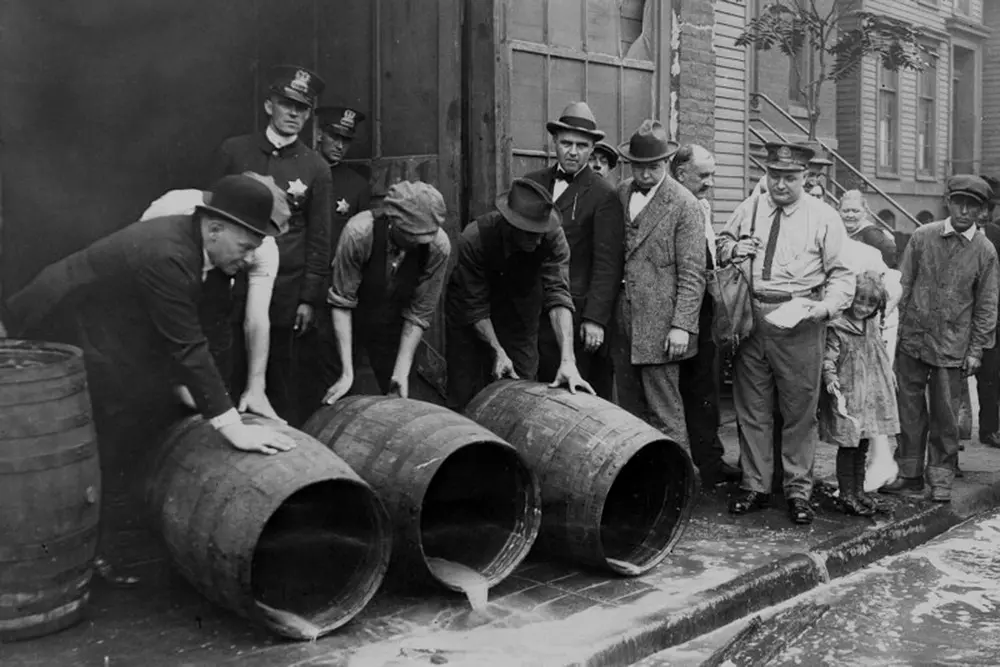America, no matter how carefully it hides its scars, remains a land of contrasts. Here, skyscrapers shine while lives crumble. Here, world-famous stars are born, conquering the planet with their charisma and talent… and monsters appear, whose names still send chills decades later. Serial killers are one of the darkest chapters in the history of the USA. Their crimes shocked not only America but the entire world.
Why did the USA become the "home" to so many maniacs? What gave rise to this phenomenon — social imbalances, mental disorders, blind spots in the system? Or perhaps freedom itself, elevated to a cult, opens the door to those hiding behind its mask?
Serial killers are not just figures in criminal chronicles. They have become a cultural phenomenon that spawned a whole industry: documentaries, drama series, books, podcasts, internet forums. People cannot look away from this abyss — not out of fascination, but out of a desire to understand how such horrors are possible. After all, the better we understand the darkness, the greater the chance to recognize it.
In this article, we will tell you about the most famous serial killers in the USA — who they were, how they operated, what drove them, and why American society cannot forget them to this day. These are not just chilling stories. They are a mirror the country fears but must look into.

According to the FBI, since 1900, the USA has recorded over 3,000 cases of serial murders — more than in any other country in the world.
Why America Is the Birthplace of the Most Notorious Serial Killers
When it comes to serial killers, the names that often come to mind are those of American criminals. Ted Bundy, John Wayne Gacy, Richard Ramirez — all of them became grim symbols of their era. So why did the USA become the “incubator” for so many notoriously infamous figures? The answer lies not in a single cause, but in a complex mosaic of social, cultural, and historical factors.
- America is a highly urbanized country. Millions of people living side by side in sprawling metropolises often feel isolated. Human connections are diluted, neighbors are anonymous, and trust is minimal. In such an environment, it’s much easier to hide: one can remain “the normal guy from the neighborhood” for decades while leading a double life. The crowd depersonalizes — and it is in the crowd where it is easiest to disappear.
- The idea of personal freedom is deeply ingrained in the US from the start: be whoever you want, live as you please, and no one has the right to interfere in your inner world. This creates fertile ground for individualism but also allows those with deviations to easily fall out of society’s sight. Moreover, until the late 20th century, there were virtually no government programs for early diagnosis and prevention of mental disorders in the US. If someone seemed strange, they were simply avoided rather than referred to specialists.
- Add to this another ingredient — a high level of media sensationalism. American media loves sensational stories, and serial killers often become “anti-celebrities” — front pages of newspapers, TV documentaries, exposé talk shows. Paradoxically, some criminals became famous precisely because of television attention. For a maniac with a messiah complex, this is a way to achieve “immortality.”
- Also, one cannot forget the easy availability of firearms, ease of travel between states, an extensive road network, and fragmented law enforcement agencies. Before the FBI established nationwide databases, each state’s police had jurisdiction only within their borders, and a serial killer could easily change crime scenes, remaining invisible. This is exactly how the “Green River Killer” operated, moving freely across the country like a survival game.
All of this makes the USA a unique breeding ground for such individuals. Here, freedom, anonymity, cultural noise, information gaps, and institutional vulnerabilities come together. Maniacs are not just products of pathology but also reflections of the fractures within American society. They are the dark side of the American dream, monsters born from the illusion of limitless possibilities.
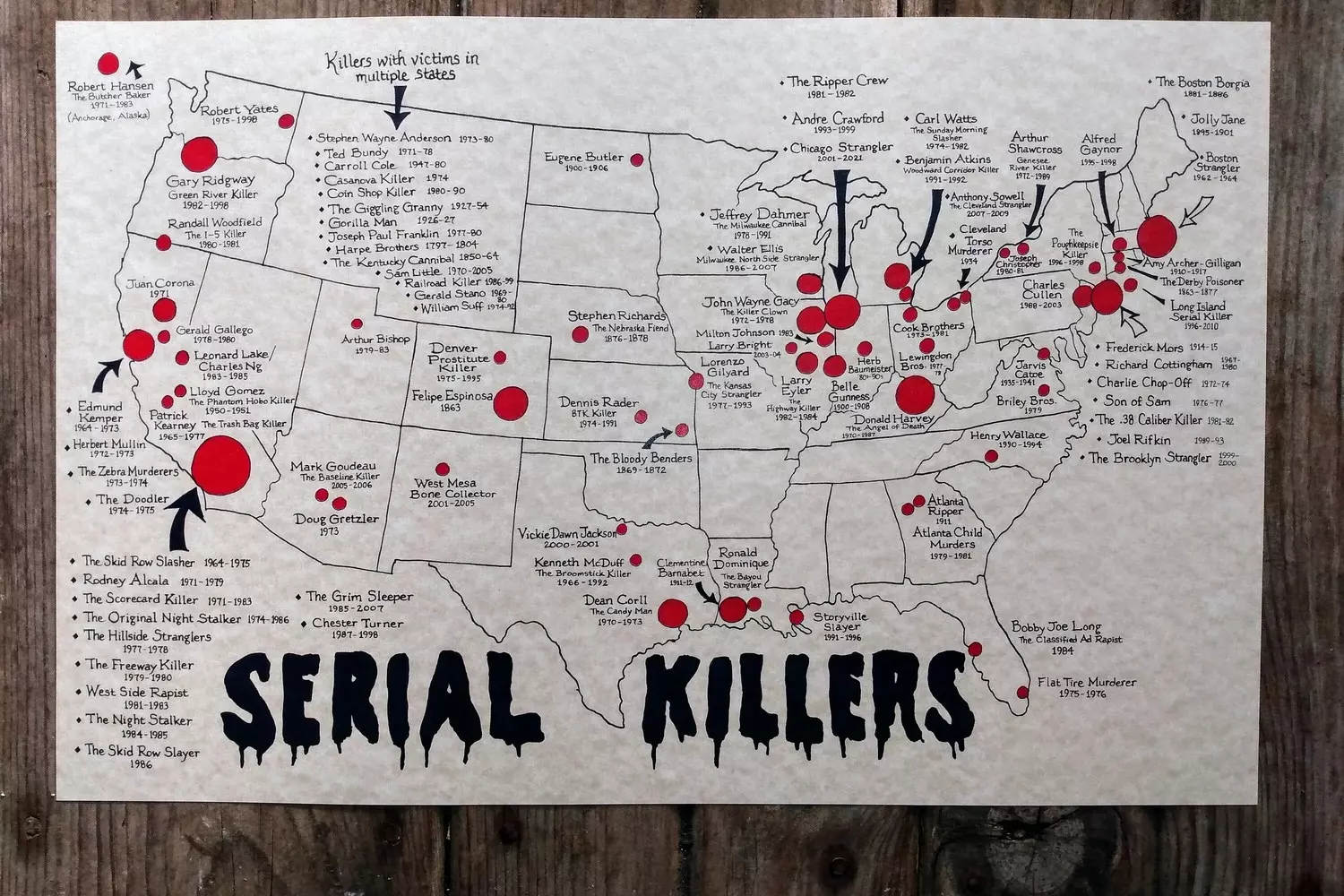
Ted Bundy — The Charm of Death
He knew how to charm. Ted Bundy didn’t look like a monster. No sinister glare, no frightening appearance, no hint of madness in his eyes. On the contrary — a law student, slender, well-groomed, with a slightly mocking smile and the confidence usually found only in natural-born leaders. He could have been a politician, professor, or lawyer — and he even worked in the Republican Party headquarters. But behind the mask of a charismatic intellectual hid a predator whose crimes shocked America.
- 01. The Mask of Normality
Ted Bundy was born in 1946 in Vermont, raised in a prosperous family, and from childhood strived to appear “normal.” He masterfully played social roles — friend, helper, lover, victim. Especially the victim. It was this “role” he often used to gain the attention of his future victims: walking around with a cast on his arm, pretending he couldn’t carry books, asking for help to carry a suitcase — and as soon as a woman leaned over, everything changed in an instant.
He lured his victims into his car — a Volkswagen Beetle, which became a symbol of horror — where dozens of young women lost their freedom and soon their lives. He killed coldly and with terrifying consistency: in the evenings, on university campuses, choosing women with long dark hair parted in the middle — supposedly because they reminded him of his first love, who left him in his youth. - 02. A Criminal Tour Across America
Bundy was one of the first serial killers to operate interstate. He committed crimes in Washington, D.C., Utah, Colorado, Idaho, and Florida. At the time, police departments from different states did not coordinate, allowing him to “disappear” after each crime and start anew.
Ultimately, this worked in his favor. He became a ghost: no one knew exactly how many women had disappeared because of him. He confessed to 30 murders, but experts believe the actual number was much higher — up to a hundred. - 03. Caught Twice
Bundy was arrested in 1975 in Utah when police stopped his car. They found handcuffs, bags, duct tape, and a crowbar in the trunk — a whole arsenal of a serial killer. He was imprisoned, where with astonishing coldness he began studying his case and preparing his defense.
Then — escape. First from the courthouse library, second from the jail cell, where he sawed through a ventilation grate. After the second escape, he made it to Florida, where he committed some of his most brutal crimes — at the Chi Omega sorority house. His actions there were so savage that even experienced investigators were shocked. - 04. Trial and Execution
Bundy’s trial turned into a media spectacle. He refused lawyers and defended himself — like a true narcissist. During the trial, he shocked the public, made sarcastic remarks, flirted with women in the courtroom, and once... proposed to one of them live on air.
But even his acting skills couldn’t save him. The jury found him guilty, and in 1989 Ted Bundy was executed in the electric chair. A crowd gathered outside the prison, greeting the news of his death with applause and signs reading: "Burn, Bundy, Burn!"
Ted Bundy became a symbol of a frightening idea: evil can be charming. He was not a “basement monster,” nor did he look like a horror movie villain. He was “one of the guys,” an intellectual with good manners and a sense of humor. And that is the most terrifying lesson of his story.
His case changed the very approach to investigating serial murders. Thanks to him, the FBI created its first full-fledged behavioral analysis unit (the very one that inspired the series "Mindhunter"). Society began to view the concept of a “maniac” differently — as a social and psychological phenomenon, not just a madman lurking in the alley.
"He didn’t look like a maniac. That was what scared me the most" — testimony from one of Bundy’s victims.
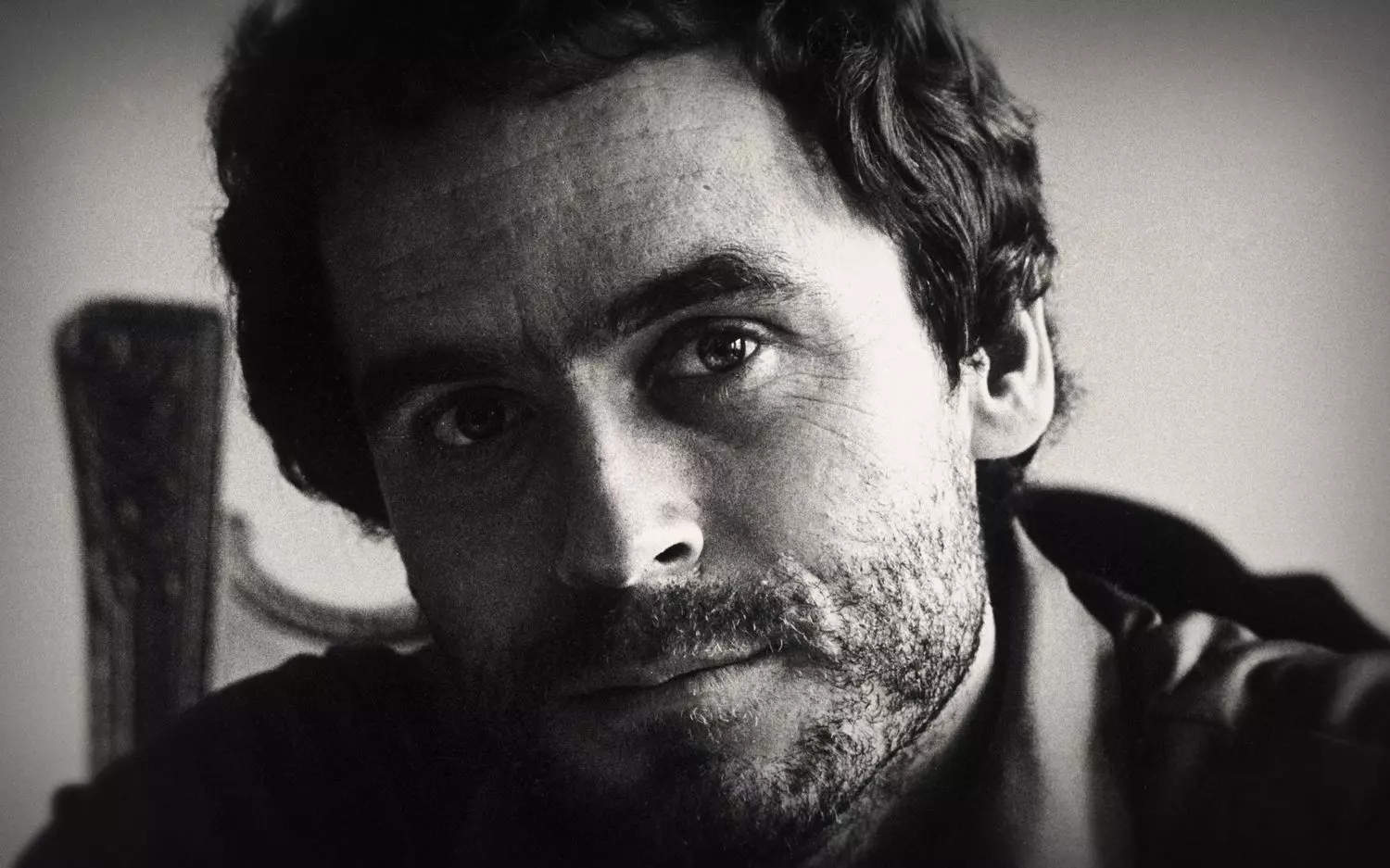
John Wayne Gacy — The Killer Clown
On the surface — a role model. John Wayne Gacy was a respected resident of Chicago: a successful contractor, activist, political party member, a person involved in charitable initiatives and hosting parties for neighbors. He even entertained children dressed as a clown named Pogo — sewing his own costumes, painting his face, and performing at hospitals and celebrations. But no one suspected that behind the broad smile hid a monster.
From 1972 to 1978, Gacy lured teenagers and young men to his home. His victims were mostly vulnerable youths — runaways, orphans, and those looking for casual work. He promised them jobs, invited them over, where he would drug or intoxicate them with alcohol. Then — he would tie them up, rape, and strangle them. Some victims spent hours or even days imprisoned in his house before dying.
The most horrifying part was how he disposed of the bodies. Under his house was a narrow, poorly ventilated crawl space where Gacy buried the murdered. When it became too cramped, he started dumping bodies into the river. Only after the disappearance of 15-year-old Robert Piest did the police have enough grounds for a search. In December 1978, they discovered the remains of dozens of young men under Gacy’s house. In total, 29 bodies were found, with four more in other locations.
Gacy tried to evade responsibility by claiming he was not acting alone or that his actions were due to mental disorders. However, psychiatric evaluation found him sane. In 1980, the court sentenced him to death. In prison, he behaved provocatively, painting pictures of clowns that were later sold to collectors. In 1994, just before receiving the lethal injection, he said: “Kiss my ass.” Thus ended the story of one of America’s most terrifying killers — a man who hid death behind a mask of laughter.

Jeffrey Dahmer — The Milwaukee Cannibal
The name Jeffrey Dahmer became synonymous with absolute horror. Even among other serial killers, he stands out not only for the scale of his crimes but also for their terrifying sophistication. His crimes were not just murders. They involved cannibalism, necrophilia, dismemberment, and a whole series of attempts to create “living zombies” from his victims. In the history of forensic science, his case is still studied as one of the most disturbing examples of profound psychopathology.
- 01. Appearance can be deceiving
At first glance, Dahmer was an ordinary young man. Quiet, polite, somewhat withdrawn. Born in 1960 in Wisconsin, he grew up in a fairly well-off family, although from childhood he showed strange inclinations: he was interested in dead animals, collected their remains, and made “preparations.” In his teenage years, he started drinking. Alcohol became his constant companion and a way to drown out inner demons.
His first murder took place in 1978, when he was only 18. He strangled a hitchhiker and hid the remains on his parents’ property. After that — a break of almost ten years. But since the late 1980s, his urge to kill became regular and systematic. - 02. The killer’s modus operandi
Dahmer targeted young men — predominantly African Americans or Latinos. Often — homosexuals or socially vulnerable individuals: homeless people, immigrants, young men without connections. He lured them to his home in Milwaukee, promising money for modeling or simply inviting them to a party. Then — he would sedate, strangle, and… begin his ritual. What followed shocked even experienced forensic experts:
- He kept skulls and body parts as “trophies.”
- Photographed the stages of dismemberment.
- Stored some organs in the fridge and ate them.
- Conducted gruesome “experiments”: drilling holes in victims’ skulls and pouring acid in — hoping to create obedient “zombies.”
He didn’t just kill — he sought to completely dominate the person, even after death.
- 03. Police mistakes and tragic irony
One of the most shocking moments in Dahmer’s story was the case of a young Laotian, Konerak Sinthasomphone. The teenager managed to escape from Jeffrey and, half-naked, made it to the street. Passersby found him and called the police. However, when the officers arrived, Dahmer convinced them that the boy was his adult lover and they were having a “family dispute.” The teenager was returned to the killer… and was killed within an hour.
This episode sparked public outrage, especially among the LGBT community and African Americans. People accused the police of racism, homophobia, and negligence. If Konerak had been saved then, several more lives might have been spared. - 04. Arrest and the “death apartment”
In 1991, one potential victim — Tracy Edwards — managed to escape Dahmer’s apartment and led police there. The officers entered the premises… and found a nightmare. Heads lay in the fridge. Hands and innards were in pots. Dismembered body photos were in closets. Acid and skulls were in the bathroom.
Dahmer was arrested and confessed to 17 murders. His behavior in court — unlike many other maniacs — was quiet and remorseful. He stated that he fully understood the horror of his actions and did not ask for leniency.
He was sentenced to 15 life terms without parole.
In 1994, just three years after his arrest, Dahmer was killed by another inmate in prison. His death sparked many debates: some believed it was just retribution, others argued the state failed to provide proper protection, even for a criminal.
Interesting fact: shortly after Dahmer’s death, his brain was removed at the request of his mother, who wanted scientists to study it and find the reasons for his cruelty. But his father insisted on cremation, and the organ was ultimately destroyed.
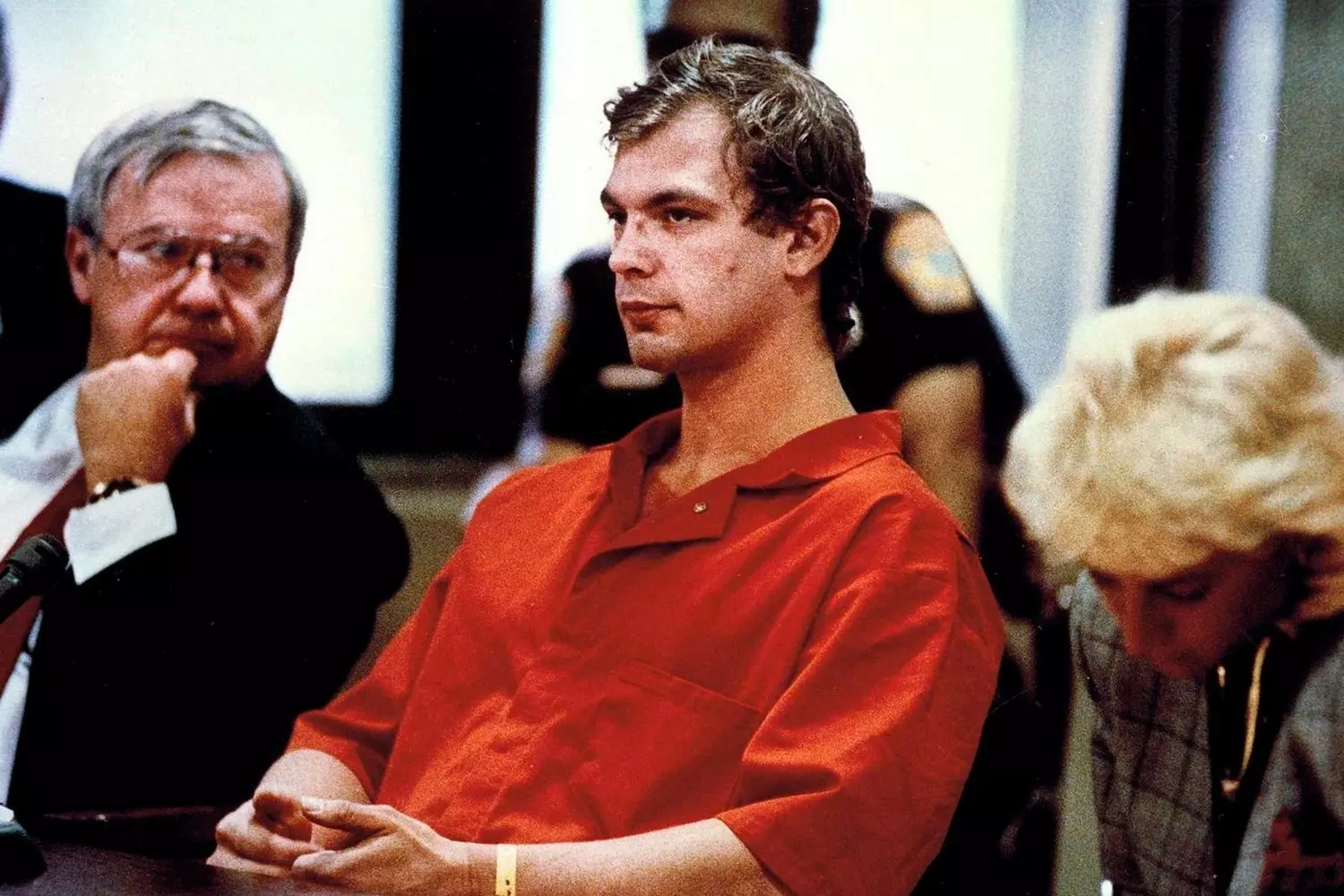
Richard Ramirez — The Night Stalker
In 1984–1985, Los Angeles was plunged into a nightmare that haunted the nights of many city dwellers. The metropolis was terrorized by one of the most brutal and enigmatic serial killers in U.S. history — Richard Ramirez, dubbed the "Night Stalker." His crimes were so dark and merciless that even decades later, his name serves as a chilling reminder that evil can creep in under the cover of night.
- 01. A Dark Childhood and the Beginning
Richard Ramirez was born in 1960 in Texas to a family of Mexican descent. His childhood was far from idyllic — his father was abusive, and his mother struggled with mental illness. From an early age, Richard displayed criminal tendencies — theft, assaults, early signs of cruelty, and a lack of empathy. Moreover, as a teenager, he became fascinated with occult practices and Satanism, which later manifested in his crimes.
After several relocations and brief incarcerations, Ramirez settled in Los Angeles, where his bloody spree began. - 02. The Signature of the "Night Stalker"
Richard's trademark was his method of attack — he broke into victims' homes at night, catching them off guard in their most vulnerable moments. His victims included both men and women, often defenseless individuals home alone. He spared no one — murdering, raping, robbing, and torturing his victims.
At crime scenes, Ramirez left terrifying markers: pentagrams, Satanic symbols, and sometimes blood-written messages or scratches on walls. This was his sinister calling card — an attempt to instill fear and mystery into the investigation.
His victims ranged from the elderly to the young, the wealthy to the poor — the "Night Stalker" chose based on opportunity and randomness. His brutality knew no bounds: sometimes he shot his victims, sometimes he tortured them before death, and other times he simply strangled them without mercy. - 03. The Hunt and Capture
For nearly a year, the Los Angeles police and neighboring jurisdictions conducted an intense manhunt with few solid leads. The media extensively covered the case, turning Ramirez into a figure of terror — almost mythical — a killer who could be lurking anywhere, even in one's own home.
The climax came in August 1985 when he was finally apprehended. Residents of Los Angeles, now hyper-vigilant after the string of attacks, recognized him. During one escape attempt, a group of bystanders identified Ramirez, chased him down, beat him, and held him until police arrived.
At trial, Ramirez made no effort to hide his ties to Satanism — he even greeted the courtroom with the "Sign of the Horns" and quoted dark texts. His demeanor was defiant, aggressive, showing utter contempt for his victims and the justice system.
He was convicted of 13 murders, along with numerous rapes and assaults. In total, he received 19 life sentences without the possibility of parole.
Richard Ramirez became a symbol of nocturnal terror for millions. His crimes exposed the fragility of safety in everyday life and how evil can infiltrate even the most private and secure spaces — one's own home.
Fun fact: Despite his horrific reputation, Ramirez gained a degree of respect and support among fellow inmates in prison, highlighting the complexity of his personality and the contradictions within his character.
He died in 2013 from complications related to cancer, but his story continues to fascinate criminologists and serves as a warning: evil often arrives without warning — silently and unexpectedly.

How Prohibition Changed America
Zodiac — The Faceless Killer
U.S. criminal history is filled with horrifying and perplexing cases, but none compare to the mystery left behind by the Zodiac — a killer whose identity remains unknown to this day. This enigmatic criminal terrorized California in the late 1960s, turning his crimes into a real-life puzzle for law enforcement and the public.
- 01. The Mysterious Terror of the 1960s
The first murders attributed to the Zodiac occurred in 1968. His victims were young couples enjoying secluded outdoor spots. His signature was cold, calculated violence — shooting his victims mercilessly while leaving minimal traces. Then came silence — only to be broken by sudden new attacks.
But what makes the Zodiac case truly unique isn’t just his crimes — it’s his method of communication with the police and the press. - 02. Cryptography and Messages
The Zodiac was obsessed with toying with society’s mind. He sent letters to local newspapers containing encrypted messages, threats, and boasts. In one such letter, he claimed to have killed 37 people, though only 5 to 7 victims were officially confirmed.
These ciphers were genuine puzzles that even top cryptographers struggled to crack. One of the most famous codes, consisting of 408 symbols, was only deciphered decades later. In the message, the killer revealed fragments of his philosophy — cold, heartless, and cryptic.
The Zodiac’s letters were not just mysterious but also taunting—he mocked the police, threatened new victims, and flaunted his elusiveness. This turned the case into a macabre spectacle where the criminal was the protagonist, and law enforcement merely spectators. - 03. Why Was the Zodiac Never Caught?
Despite massive police efforts and numerous suspects, the Zodiac’s identity was never conclusively proven. He left no definitive forensic evidence, and his behavior was too calculated and cautious.
The case remained open for decades, and even in the 21st century, new attempts — using DNA analysis, computational cryptography, and archival research — have tried to solve this enduring mystery.
The Zodiac became a symbol not just of fear, but of enigma. His name has permeated pop culture — inspiring films, books, and documentaries dedicated to the investigation. He spawned countless theories — from the idea of a lone psychopath to a broader conspiracy.
Interestingly, the Zodiac influenced the entire true-crime genre, changing how law enforcement approaches serial killers and placing greater emphasis on criminal psychology.
The answer is simple: the human mind loves a mystery. The Zodiac’s story isn’t just a chronicle of crimes — it’s a game of riddles, a challenge thrown at society. This faceless killer reminds us that evil sometimes has no clear form, and its nature remains a puzzle we desperately try to solve — if only to find peace.
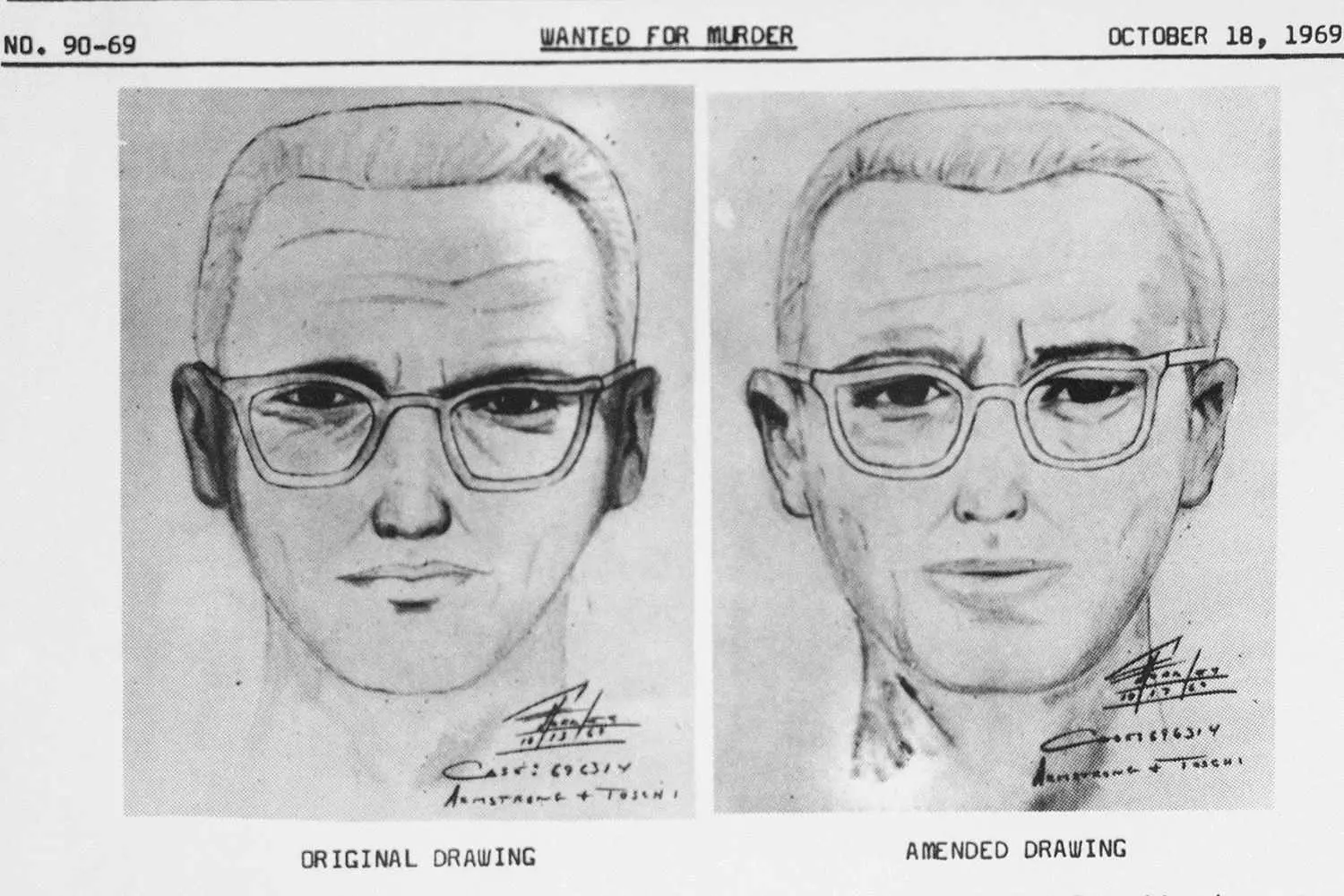
Gary Ridgway — The Green River Killer
Gary Ridgway — one of the most sinister names in American criminal history. Dubbed the "Green River Killer" after the Washington state river near which he committed his crimes, his victims numbered in the dozens — helpless women whose fates shocked even seasoned investigators. The staggering death toll he eventually confessed to remains chilling to this day.
- 01. Victims on the Margins of Society
During the 1980s and 1990s, women — many of them sex workers or those living on society’s fringes — began disappearing around Seattle. Ridgway deliberately targeted these vulnerable, forgotten individuals, luring them with promises of help or work before murdering them. Most were later found near the Green River.
The final count was horrifying. Officially linked to 49 victims, Ridgway himself — along with many experts — claimed the true number exceeded 70. These were women whose disappearances rarely made headlines, people society had already rendered invisible. - 02. Master of Disguise and a Cold-Blooded Killer
Gary Ridgway lived a double life: a married factory worker who appeared quiet and unremarkable. But behind this façade lurked a calculating serial killer. He expertly evaded suspicion, concealed evidence, and left no clear trail for investigators.
He selected victims meticulously, then hid their bodies in remote locations. Early in the investigation, the difficulty of recovering remains kept the "Green River" case unsolved for years. - 03. The Turning Point — Arrest and Confession
In 2001, after decades of police work and breakthroughs in DNA analysis, Ridgway was finally arrested. In court, he pled guilty to murdering 49 women — one of the largest confessions by a serial killer in U.S. history.
To avoid the death penalty, he cooperated with investigators: helping locate victims' remains and providing gruesome details. The court sentenced him to life imprisonment without parole.
The Gary Ridgway case became a landmark in American criminology. It exposed how society’s neglect of vulnerable groups, combined with systemic investigative failures, allows predators to operate unchecked. It also underscored the critical role of forensic advances — without DNA technology, the killings might never have been solved.
Today, charities and advocacy groups honor Ridgway’s victims by supporting at-risk communities and combating violence. His story forces us to remember: behind statistics and sensational headlines lie real lives — and real tragedies.
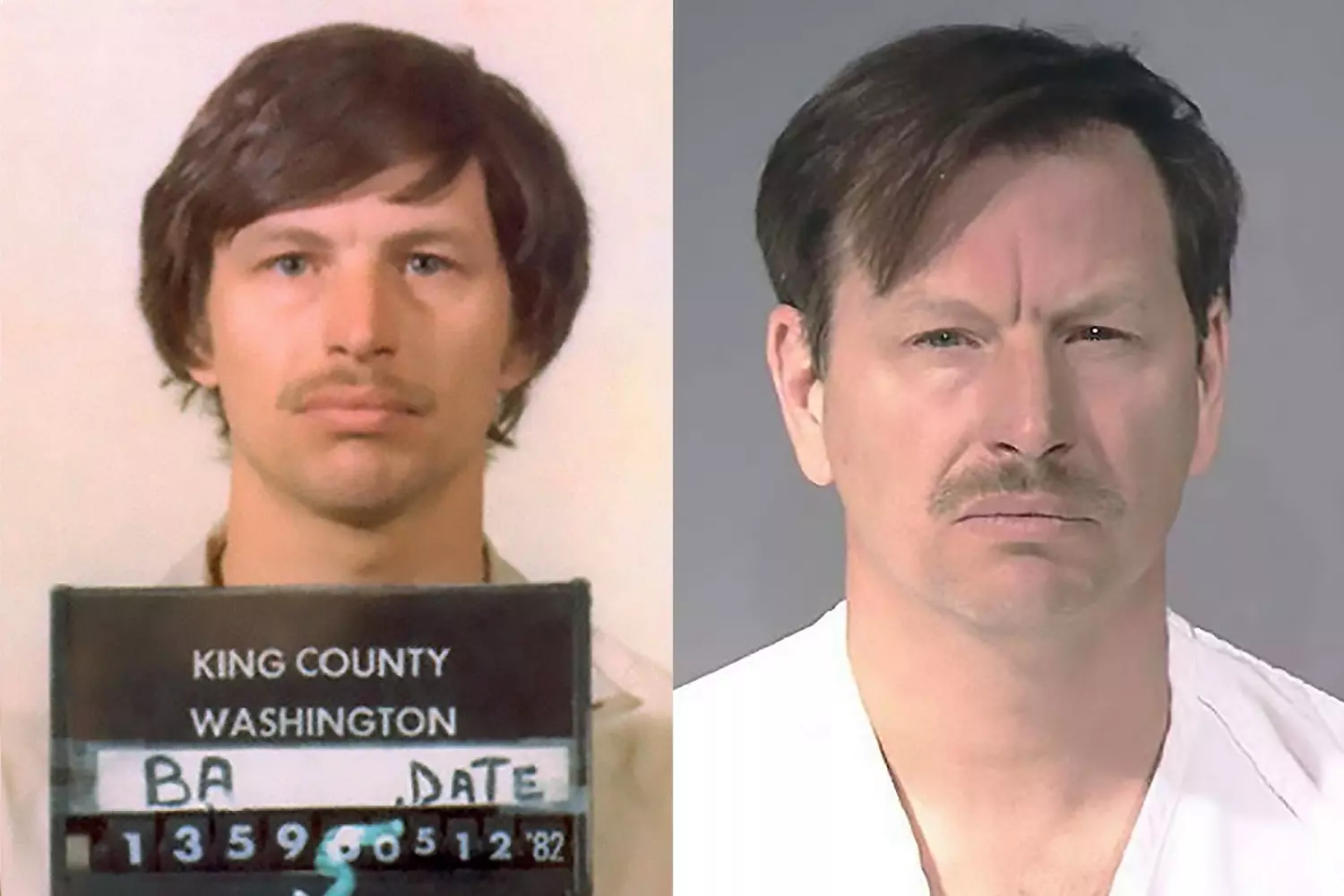
Ed Kemper — The Co-Ed Killer
Ed Kemper — one of the most terrifying yet peculiar figures in American criminal history. His moniker "The Giant" refers not only to his imposing 6'8" (2.03 m) frame but also to his chilling intellect and complex psyche. A walking contradiction — with a genius-level IQ, philosophical inclinations, and the horrific crimes he committed in the late 1960s — Kemper remains a disturbing enigma.
- 01. Early Years and Warning Signs
Born in 1948 in California, Kemper displayed exceptional intelligence from childhood — psychologists measured his IQ at 145, placing him in the genius range. Yet this brilliance coexisted with a dark undercurrent: an intense hatred for his mother and profound loneliness.
Even as a teenager, Ed exhibited violent tendencies, though they initially went unchecked. Psychologists and relatives noted alarming traits — withdrawal, sudden aggression, and disturbing fantasies — that foreshadowed his future crimes. - 02. The Nightmare of His Killing Spree
In 1972, Kemper began his gruesome series of murders. His victims were young women who often picked him up as a hitchhiker. He lured them into his car, where he committed unspeakable acts — rape and murder — before dismembering their bodies with eerie precision.
Most shocking was the killing of his own mother, the culmination of their toxic relationship. After murdering her, he decapitated and mutilated her corpse, a final act that cemented his status as one of history’s most methodical killers. - 03. The Killer’s Mind: Intellect and Philosophy
Despite his atrocities, Kemper possessed a razor-sharp mind. During interrogations and trials, he quoted philosophers, dissected the nature of evil, and analyzed human psychology. His interviews and confessions became invaluable to psychologists and criminologists studying the minds of serial killers.
He didn’t just kill — he *studied* himself, dissecting his motives and actions with clinical detachment. This self-awareness, paired with his intellect, made him uniquely articulate among murderers, offering rare insights into the psyche of a predator.
After his arrest in 1973, Kemper pleaded guilty and received a life sentence. He remains incarcerated in a California prison to this day. Over the decades, he has granted numerous interviews, detailing his life, motivations, and inner turmoil with unsettling clarity.
His case continues to provoke debate — a stark lesson in the duality of human nature and the fragile boundary between brilliance and madness.
Notably, Ed Kemper inspired characters in the TV series "Mindhunter" and "Hannibal."
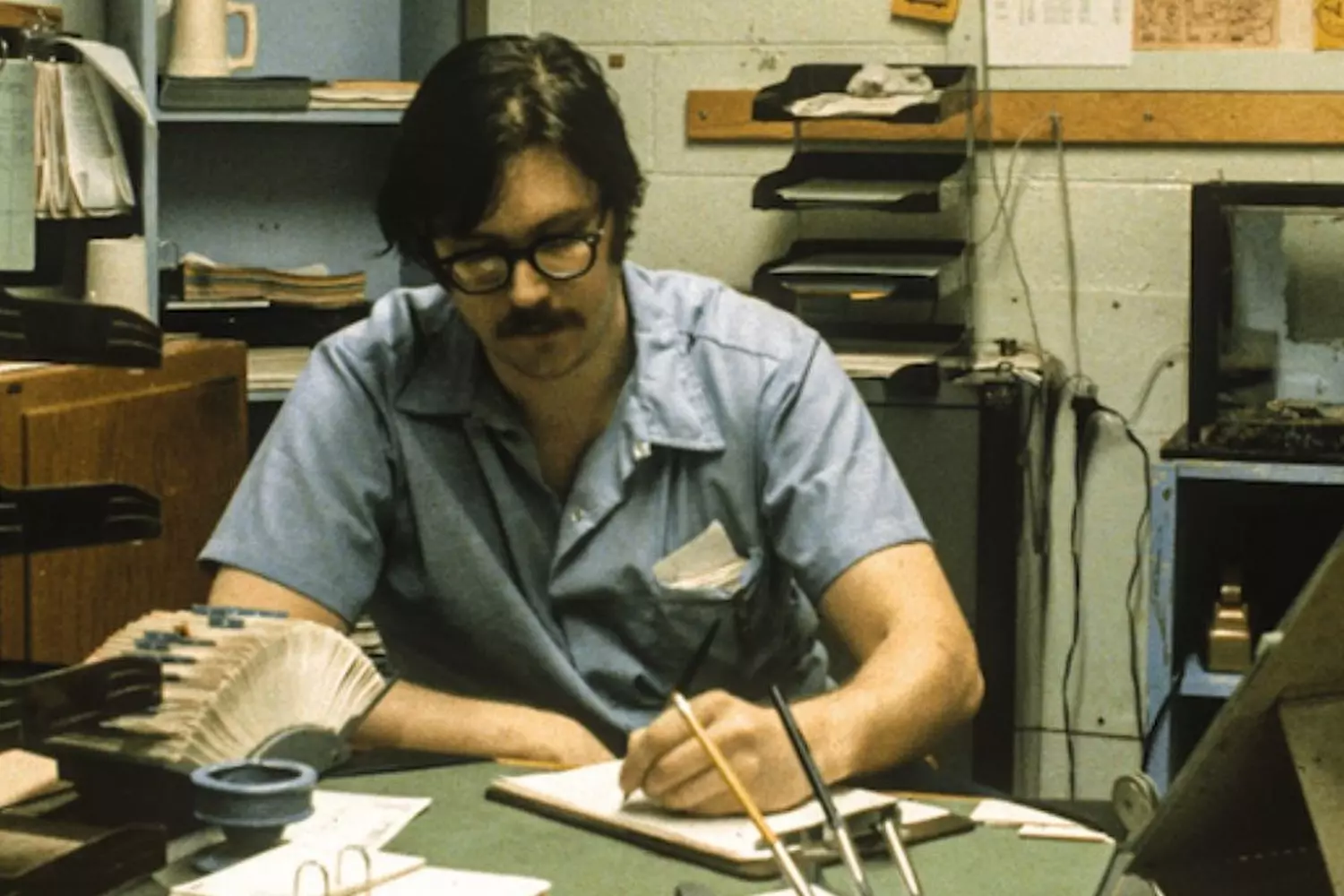
Albert Fish — The Sadistic Cannibal
When discussing the most horrifying and repulsive criminals in U.S. history, the name Albert Fish invariably sends chills down the spine. Active in the early decades of the 20th century, this man became synonymous with pure terror — a sadist, cannibal, and deviant whose crimes shocked the entire nation.
- 01. Who Was Albert Fish?
Albert Fish was born in 1870 in New York. From childhood, his life was marked by tragedy and psychological trauma. He suffered excruciating pain and disturbing sexual fantasies that gradually morphed into pathological obsessions.
As an adult, Fish embarked on his horrific spree — acts so vile they defy comprehension. - 02. Crimes Beyond Comprehension
Fish specialized in murdering children — the most vulnerable and innocent victims. His methods weren't merely cruel — they transcended human understanding. After killings, he dismembered bodies and consumed flesh, indulging in sadistic rituals.
Most vile were the letters he sent to victims' parents, detailing atrocities committed against their children with gleeful sadism. These served as his grotesque "trophies." - 03. Reign of Terror (1920s–1930s)
Operating primarily in New York during the 1920s–early 1930s, Fish masked his brutality behind a facade of normalcy. His meticulous caution prolonged his freedom until police work and chance evidence led to his capture. - 04. Trial and Execution
Fish's 1936 trial became one of America's most infamous criminal proceedings. Declared sane, he showed no remorse — his confessions horrified even seasoned investigators.
Executed by electric chair in 1937, his death closed a dark chapter in U.S. criminal history.
Albert Fish's name still evokes horror because he violated humanity's most sacred boundaries — preying on children in unspeakable ways. His crimes remind us how deeply evil can fester within a human soul.
Yet Fish represents more than just a monster: his case underscores the critical need to study criminal psychology, helping prevent such atrocities from recurring.
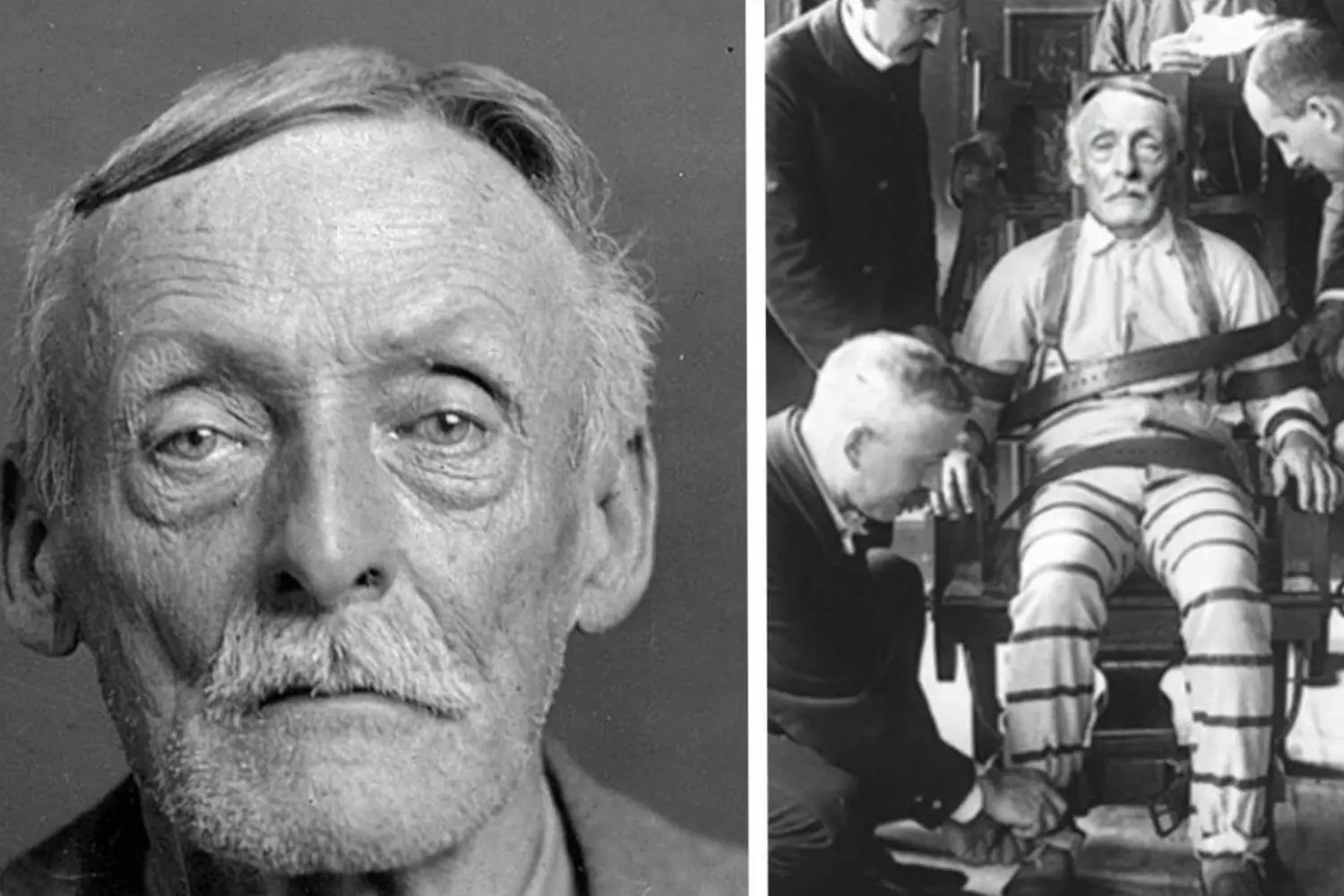
Aileen Wuornos — Female Serial Killer
Aileen Wuornos — a name that prompts reflection on the darker sides of human fate, cruelty, and the struggle to survive in a harsh world. She became the first female serial killer to gain widespread notoriety in the U.S., and her story continues to spark heated debates and discussions.
- 01. Early Life — The Beginning of Tragedy
Aileen was born in 1956 in Florida into a troubled family: parental alcoholism, abuse, and neglect made her childhood miserable and traumatic. As a teenager, Aileen was already facing brutality — she survived sexual assault and an early estrangement from her family.
These harsh life circumstances laid the foundation for future tragedies. She became homeless at a young age, lived on the streets, and tried to survive by any means necessary. - 02. Crimes — Victim or Predator?
Aileen Wuornos was convicted of killing seven men between 1989 and 1990 in Florida. But unlike typical serial killers, Wuornos claimed that all the killings were acts of self-defense — she said the men had tried to assault her.
Many of the victims were random clients Aileen picked up while working as a prostitute. Her life story, filled with violence and fear, paints a complex image: on one hand — a cold-blooded killer; on the other — a woman trying to survive in a world where violence was an everyday reality. - 03. Capture and Trial
After a series of murders, the police finally apprehended Aileen. The trial drew major media attention — a woman who had committed so many murders became a sensation. In court, she pleaded guilty but insisted that she acted in self-defense and was merely trying to survive in difficult circumstances.
Nonetheless, the court found her guilty on all counts. In 1992, Aileen Wuornos was executed in the electric chair.
Aileen Wuornos's story inspired many filmmakers and writers. In 2003, the film “Monster” was released, with Charlize Theron playing Aileen. The role earned Theron an Academy Award for Best Actress and made Wuornos’s story even more widely known across the globe.
The film doesn’t just depict the crimes, but attempts to show the complexity of Aileen’s character — her pain, fears, and struggle to survive. It’s one of the few movies that makes viewers question what lies behind the label of “monster” and how life circumstances can change a person.
Aileen Wuornos serves as an example of how crime and victimhood are sometimes inseparably intertwined. Her life is a dark lesson on how childhood trauma and cruel conditions can lead to tragic consequences.
Her story raises questions about justice, the psychology of crime, and how society should support vulnerable individuals to prevent such tragedies from recurring.

David Berkowitz — Son of Sam
In the late 1970s, New York was gripped by fear and panic — a killer known as "Son of Sam" was roaming the city. He claimed the lives of six people and injured several others. But the most chilling part of David Berkowitz's story was his explanation and motivation, which revolved around a demon allegedly living in his neighbor’s dog.
- 01. Who is David Berkowitz?
David Berkowitz was born in 1953 and grew up in New York. An ordinary guy, but plagued by inner demons that soon began to control his life and actions. In July 1976, he started a killing spree, shooting random people — mostly young couples in their cars or on the streets.
The murders were carried out with extreme cruelty and cold-bloodedness, terrifying the city’s residents. - 02. Mystical motive — a demon in a dog’s body
Berkowitz claimed that something supernatural was behind his actions. According to him, he received orders to kill from a demon living inside his neighbor’s dog — a large black canine named Sam. This "Sam" was, in the killer’s words, not just a dog, but the embodiment of evil that influenced his mind and compelled him to murder.
He called himself the "Son of Sam" and wrote chilling letters to newspapers and the police, describing his crimes and warning of more to come. These letters added mystery to the case and heightened public fear. - 03. Capture and confession
After nearly a year of terror, New York police managed to apprehend Berkowitz in August 1977. His arrest was almost accidental — officers noticed a suspicious young man acting nervously and carrying a weapon matching the description of the killer’s firearm.
During interrogation, David confessed to all the murders and spoke about the "demon" in the dog, though experts later determined this was a psychological defense mechanism and an attempt to shift responsibility. - 04. Trial and aftermath
Berkowitz was found sane and sentenced to six life terms, which he is currently serving in prison. Over the years, he publicly repented and admitted that his story about the dog was fabricated, created under the influence of mental illness.
The story of the "Son of Sam" became a symbol of the dark side of the human psyche and an example of how fear and panic can consume an entire city.
David Berkowitz’s story is important not just because of the number of victims, but because of its cultural impact. He showed how one person can become the epicenter of mass fear, and how myths and legends are born on the streets of a metropolis.
His letters and the "Son of Sam" persona inspired not only crime reports but also books, films, and music, becoming part of American pop culture.
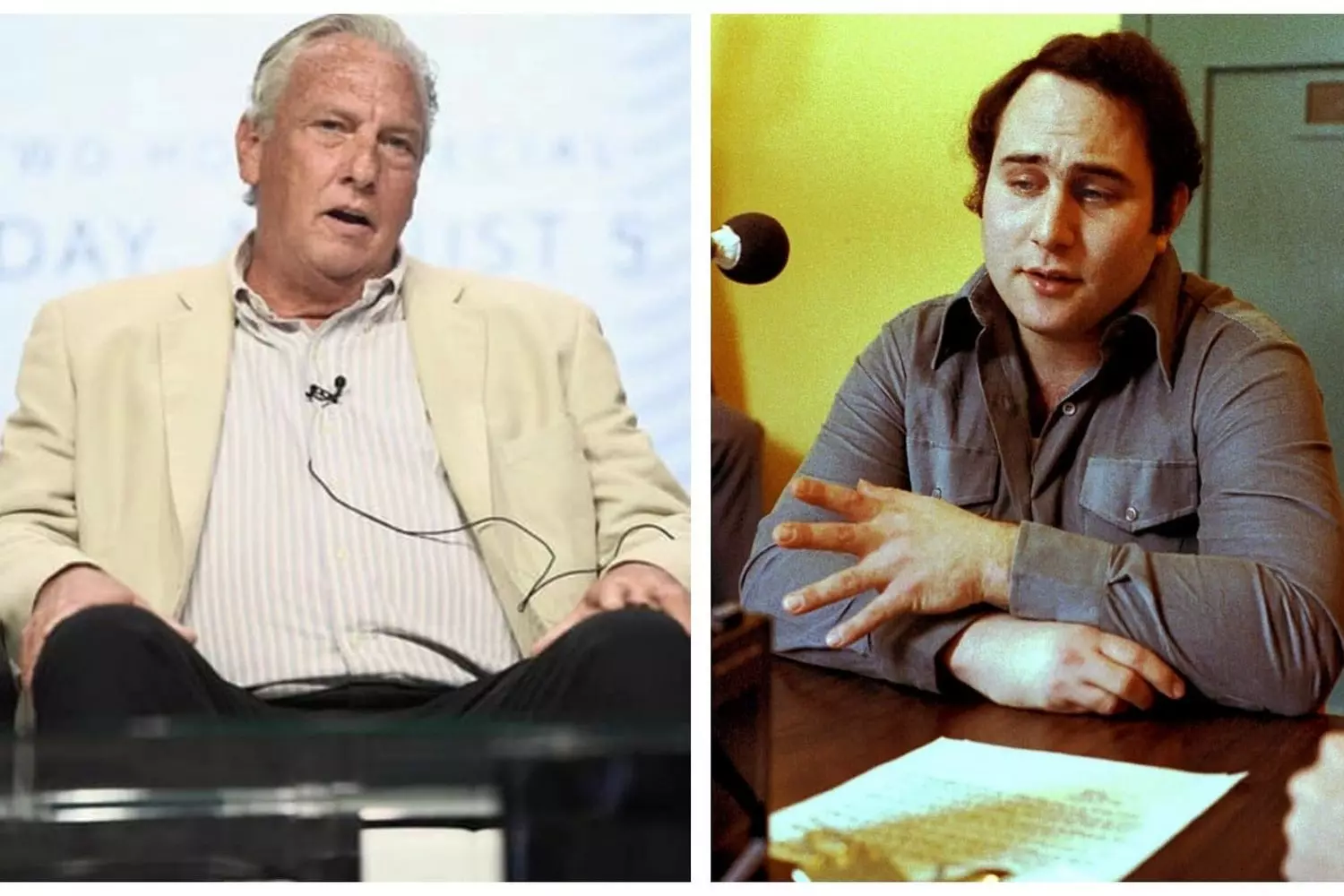
Lesser-Known Serial Killers of the USA: The Dark Shadows of Criminal History
American criminal history is not just about the infamous names that flash across news headlines and movies. Behind them lie dozens of lesser-known yet equally horrifying serial killers whose crimes left a deep mark on legal cases and the lives of their victims.
- 01. Albert Henley — “The Boiler Man”
Active in the late 1970s in Illinois. Albert Henley killed at least 10 women, often dumping their bodies in abandoned buildings with boilers — hence the nickname. His victims were mostly vulnerable and homeless women. Though he remained out of the media spotlight, his brutality shocked the local community. - 02. Delvin Robinson — “The Mississippi Killer”
Robinson operated in the 1990s, murdering around 8 people, primarily young women. He was known for meticulously planning his crimes and leaving no trace. However, he was eventually caught due to a careless mistake and confessed, becoming an example of a cold and calculating killer. - 03. Harold Shipman — “Doctor Death” in the U.S. (although best known in the UK, similar cases occurred in the U.S.)
A doctor who murdered several patients under the guise of medical treatment. Such killers often go unnoticed for a long time due to their “profession,” causing fear and mistrust in the healthcare system. - 04. Baker Street Stranger
An unofficial nickname for a serial killer who terrorized a neighborhood in New York City in the late 1980s. He was eventually caught, but his motives remain a mystery, and his methods continue to be studied by criminologists. - 05. Randy Kraft — "The California Night Stalker"
Active between 1979 and 1983. He murdered around 16 young men, many of whom were gay or marginalized. Known for extreme brutality and sadism — his victims were tortured before being killed. He was caught through police efforts and sentenced to life in prison. - 06. Henry Lee Lucas — "The Monster of Texas"
He claimed to have killed more than 200 people, though the exact number remains unknown, and many of his confessions were fabricated. Lucas had a traumatic childhood, severe mental health issues, and was highly unstable. His case is one of the most controversial in American criminal history. - 07. Arthur Schultz — "The Seattle Phantom"
Active in the 1990s, he killed around 7 women. Notably, he targeted homeless women and those living in difficult circumstances. He was caught after leaving key evidence at a crime scene. His case taught law enforcement valuable lessons about working with vulnerable populations. - 08. Gary Heidnik — "The Beast of Philadelphia"
Kidnapped and held several women captive, subjecting them to brutal torture. His crimes shocked the public due to their sheer sadism and cruelty. He died during an escape attempt from prison.
The less famous names often remain in the shadows, but their crimes are no less tragic. These stories are reminders that danger can lurk anywhere — and that it's not just about fame, but also remembering the victims. Moreover, studying such cases helps law enforcement improve investigative methods and prevent future crimes.
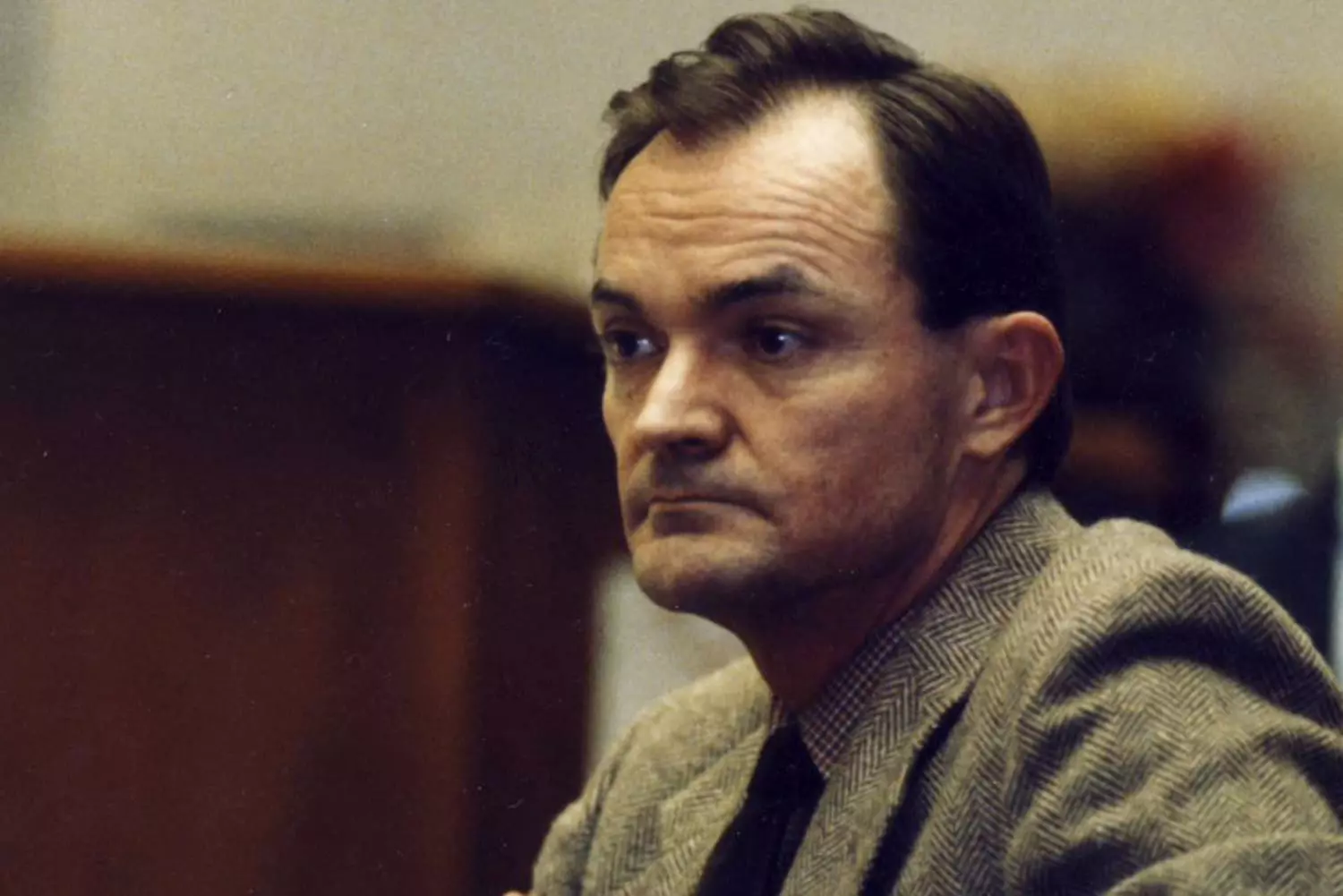
What do all these criminals have in common?
When we look at the stories of infamous criminals like Jeffrey Dahmer, Richard Ramirez, the Zodiac Killer, and many others, it may seem that they are completely different — with different motives, methods, and personalities. However, upon closer analysis, it becomes clear: they all share several common traits that help us understand the nature of their horrific actions.
- 01. Mental disorders — the dark core of their nature
Mental health is a key factor that unites most serial killers. Almost all the criminals on our list were either diagnosed with or showed symptoms of serious psychological disorders:
- Sociopathy (antisocial personality disorder)
This condition is characterized by a lack of empathy, an inability to feel compassion, and disregard for societal norms. Such individuals do not feel guilt for their actions, allowing them to commit horrific crimes without remorse. - Schizophrenia and psychosis
Some killers, like David Berkowitz, claimed to be under supernatural influence — a demon in the form of a dog, voices in their head, and other symptoms of psychosis. These disorders lead to a distorted perception of reality. - Narcissism and delusions of grandeur
Many criminals had an inflated sense of self-importance and considered themselves special. Richard Ramirez, for instance, displayed extreme egocentrism and fanaticism.
A high IQ, as in the case of Ed Kemper, often doesn't save one from deep psychological issues — intelligence simply gives them tools for more elaborate crimes.
- 02. Childhood trauma — the roots of evil
Another crucial factor is a difficult childhood and trauma during adolescence. Most serial killers experienced abuse, neglect, and a lack of support from their families.
- Domestic violence
Physical or psychological abuse from parents or guardians often leaves deep emotional scars. These traumas form the foundation for future destructive behavior patterns. - Lack of parental love and attention
Feelings of abandonment, loneliness, and misunderstanding hinder the healthy development of personality and socialization. - Poverty and social isolation
Many of the criminals grew up in poverty and crime-ridden environments, which further exacerbated their internal conflict and alienation.
Childhood is the foundation, and if cracks form there, a person becomes vulnerable to pathology and negative influences.
- 03. Pathological need for attention and recognition
No less notable is the desire for fame and to be noticed — even if it means committing terrible crimes.
- Many serial killers, including the Zodiac and David Berkowitz, wrote letters to newspapers and law enforcement. They seemed to play with the police, offering riddles and demanding recognition.
- Some gave interviews and revealed details of their crimes to heighten fear and attract public attention.
- This thirst for recognition and control over the narrative was a way to feel powerful and important — something they lacked in ordinary life.
Such behavior reflects their inner void and pathological need to assert themselves through destruction.
- 04. System failures — when mistakes cost lives
Another common trait is that many of these killers could have been stopped much earlier if not for errors or shortcomings in the work of law enforcement and the system as a whole:
- Sometimes the police underestimated the seriousness of the threat, failed to connect related crimes, or ignored key evidence.
- There were cases when criminals received overly lenient sentences for initial offenses, which did not deter them later.
- Lack of coordination between departments, outdated technology, or human error often resulted in murderers remaining free for a long time.
These gaps allowed killers to continue their horrific acts while society lived in fear.
Studying such tragic stories not only frightens us but also helps us understand the complex causes behind crimes. Mental disorders, childhood trauma, the need for attention, and systemic errors — all these factors intertwine in the dramatic mosaic of the human psyche.
Understanding these patterns not only improves crime investigation but also helps to identify dangerous individuals in time and to create effective prevention and support mechanisms.

Criminal America in Culture: Why Are We So Fascinated to Look into the Darkness?
Есть что-то магнетическое и одновременно пугающее в истории серийных убийц. Почему именно они приковывают наше внимание? Почему ужасы, связанные с ними, так широко отражены в фильмах, сериалах, книгах и подкастах? В чем секрет массового увлечения «темной стороной» человеческой природы?
- Fear and curiosity — two sides of the same coin
The answer lies deeper than it seems at first glance. We all experience fear — fear of the unknown, of violence, of the destruction of the familiar world. But along with that fear lives curiosity. We try to peer into the darkest corners of the human soul, to understand the motives of those who commit the most horrific crimes.
It’s like watching a fire from a safe distance: terrifying, yet impossible to look away. Stories of serial killers are a mirror of our deepest fears — but also a challenge — an attempt to understand why a person might commit such horrors. - Criminal culture in the U.S.: scale and influence
America has become the global center of criminal culture — a phenomenon that has moved far beyond simple crime reporting. This genre has evolved into a standalone cultural trend, with its own stars, fans, and forms of expression.
Films and series. From the cult classic “Mindhunter”, which portrays the birth of criminal profiling, to intense biographies like “Conversations with a Killer: The Ted Bundy Tapes” — each project aims not just to tell a story, but to delve into the psychology of killers. These films don’t just scare — they provoke reflection on the nature of evil.
Why the U.S. in particular?
Why did criminal culture reach such heights specifically in America? The answer lies in several key factors:
- Historical background
From early on, the U.S. developed a system of mass media, and crime stories have always attracted public attention. As early as the 19th century, the “yellow press” was already filling newspapers with sensational crime reports. - Diversity and scale
A huge population, a complex social structure, and large urban areas all created fertile ground for a wide range of crimes — and public interest in them. - A culture of openness and investigation
American society is marked by a high level of engagement in matters of justice and investigation. This is reflected in the popularity of the true crime genre, which deeply explores real crimes and legal proceedings.
What are we looking for in these stories?
When we dive into crime stories, we’re searching for answers to several fundamental questions:
- Who are these people?
What drives a serial killer? How does someone become capable of such horrific acts? - Why do they do it?
It’s an attempt to understand the motives, traumas, and pathologies that led to the crimes. - Could the tragedy have been prevented?
Investigations often reveal systemic gaps and missed signs that could have saved lives. - What happens to the victims and their families?
This matters so we don’t lose sight of the humanity and the pain — not just become fascinated by the horror.
Stories of serial killers and true crime dramas are not just entertainment. They are a way to comprehend the darkest aspects of human nature and society. Through them, we learn to spot danger, understand the complexity of the human psyche, and strengthen systems of protection.
Criminal culture has become an integral part of American identity, combining fear and curiosity, horror and understanding — and that’s exactly why it captivates millions around the world so deeply.
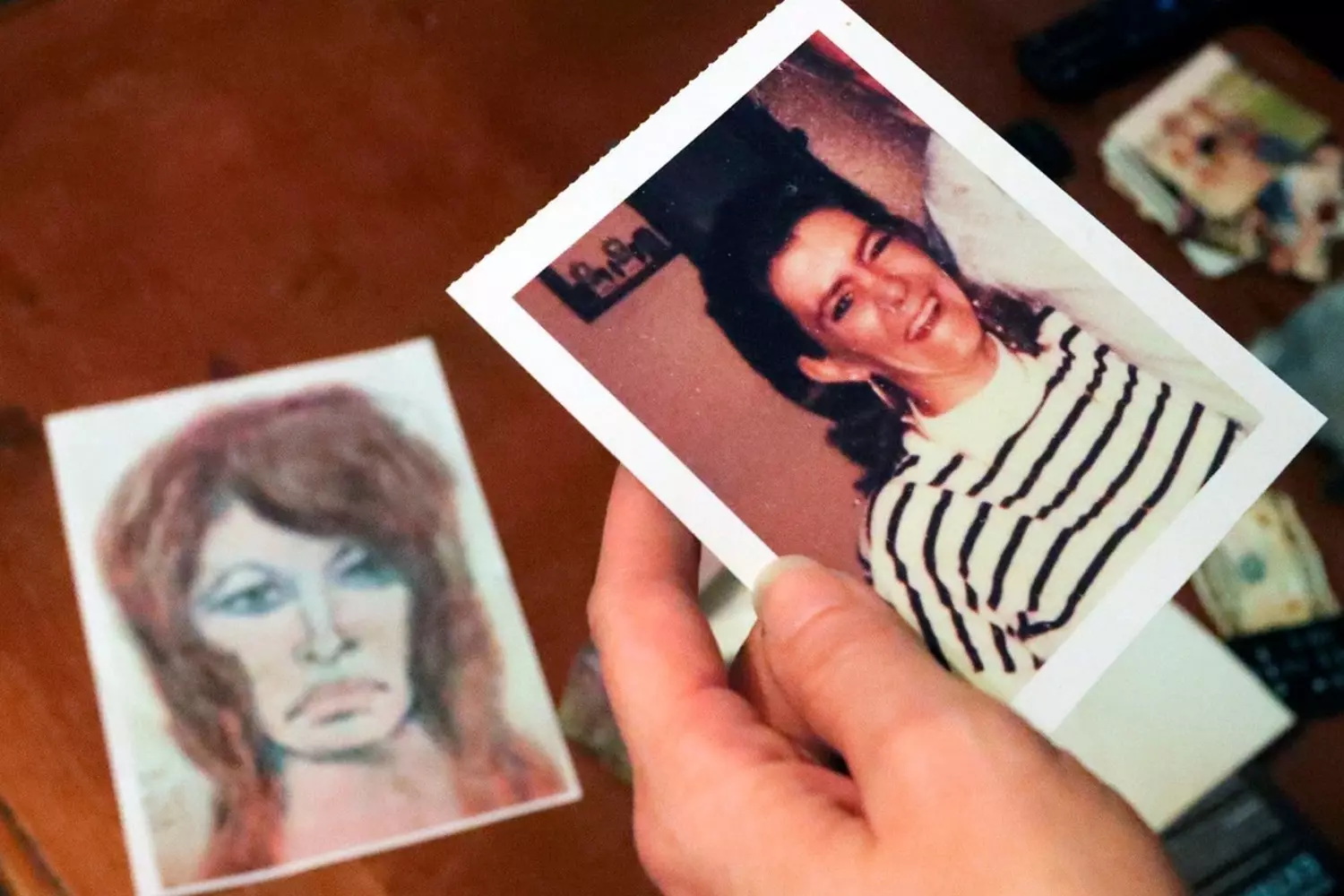
Serial Killers in American Culture: Films, Books, and the Phenomenon of Public Fascination
The stories of serial killers and maniacs have long ceased to be merely the subject of crime reports — they have become a true part of American culture. From Hollywood to bookstore shelves, the image of the killer permeates all spheres, forming a unique genre and even a cultural phenomenon.
- 01. Movies — from horror to deep psychology
American cinema has played a huge role in shaping how the world perceives serial killers. Hollywood has turned these terrifying stories into gripping and sometimes hauntingly beautiful films that entertain and provoke deep thought.
- “The Silence of the Lambs” (1991)
One of the most iconic films showcasing the complex psychological portrait of the killer Hannibal Lecter. Fear is combined with intellectual challenge — the viewer dives into the intricacies of the murderer’s mind rather than just witnessing brutality. - “Extremely Wicked, Shockingly Evil and Vile” (2019)
A biographical drama about Ted Bundy, one of America’s most infamous serial killers. The film reveals not only his crimes but also the charisma he used to manipulate those around him. - “Hannibal” and “Red Dragon”
Follow-ups to “The Silence of the Lambs” with new stories and a deeper analysis of the psychological world of killers. - “Monster” (2003)
The story of Aileen Wuornos — one of the few known female serial killers. The film draws attention to social causes and personal tragedy.
American filmmakers know how to create an atmosphere where fear is combined with curiosity, and sometimes — with empathy. Killers in film are not just villains, but complex, multi-layered personalities.
- 02. Literature — deep dives and true crime
In literature, the topic of serial killers has developed into two major directions: fiction and investigative nonfiction.
- Nonfiction books
Works such as “Helter Skelter” by Vincent Bugliosi recount the case of Charles Manson and reveal real details of investigations. These books read like thrillers, but are based on facts. - Psychological portraits
Many authors attempt to delve into the minds of killers, exploring their motives, traumas, and the nature of evil. For example, John Douglas’s “Mindhunter”, based on the early days of FBI profiling, became a bestseller and inspired the eponymous TV series. - Fictional literature
Novels inspired by real events allow authors to add psychological depth and artistic detail, giving the subject a new dimension.
- 03. Podcasts and documentaries — the new face of crime culture
In recent years, the true crime podcast format has become incredibly popular. Podcasts let listeners independently dive into the stories, hear expert opinions, and analyze investigative paths.
- “Serial” — the groundbreaking podcast that started the true crime boom
It showed how public attention to a single story can grow over weeks and months, involving the audience in the search for truth. - “My Favorite Murder” and other shows
They combine serious crime analysis with humor and the hosts' personal stories, making the genre more accessible and engaging.
- 04. Why is this topic so popular?
The image of the serial killer has become a symbol of fear, mystery, and the dark side of humanity — and at the same time, a subject of deep interest. This is a phenomenon that helps society discuss and understand complex issues of psychology, safety, and morality.
American culture in this sense serves as a kind of therapeutic platform: through the stories of killers, people try to make sense of horrors, learn how to confront them, and prevent such tragedies from happening again.
Serial killers in American culture are not just villains from crime reports, but complex characters around whom multilayered stories are created in film, literature, and media. This phenomenon combines fear and curiosity, horror and the desire to understand — making criminal culture an integral part of modern American identity.

A few shocking facts about American serial killers that few people know about
Сerial killers have always attracted attention for their brutality, mystery, and ability to evade justice for years. But behind the infamous names like Ted Bundy and Jeffrey Dahmer lie lesser-known, yet equally chilling details.
- 01. The killer who hosted a show… about catching himself
Dennis Rader, known as “BTK” (Bind, Torture, Kill), terrorized Kansas for decades, sending taunting letters to the police describing his crimes. The most absurd moment came when he called a radio show about the BTK case and asked, “Do you think they’ll ever catch BTK?” Ultimately, he was caught thanks to… a church flash drive where he served as a deacon. - 02. The maniac who worked at McDonald’s and fed victims burgers
John Wayne Gacy, who murdered 33 boys, also worked as a clown at children’s parties. Few know that he owned several fast food restaurants and sometimes lured his victims by offering them food. Some disappeared right after a shift. - 03. A female killer who poisoned people with a “cure” for alcoholism
Jane Toppan, a nurse in the late 19th century, administered lethal doses of morphine to patients and then tried to “save” them to appear as a hero. She later confessed she experienced sexual pleasure watching them die in agony. - 04. The most “polite” maniac in history
Ted Bundy, who killed over 30 women, often helped the police… search for himself. At one point, he even joined the investigation under a fake name and gave investigators advice. - 05. The maniac who turned his home into a “torture museum”
David Parker Ray, the “Toy-Box Killer”, built a soundproof torture chamber in his trailer filled with instruments of pain. He even recorded audio instructions for his victims, describing in detail how they would be tortured. - 06. The killer who inspired *The Silence of the Lambs*
Ed Gein, though he “only” killed two people, inspired the characters of Buffalo Bill and Hannibal Lecter. Police found furniture made of human skin, masks made from faces, and a bowl made of a skull in his home. - 07. The maniac who could have become President of the United States
Few know that Henry Lee Lucas, who confessed to 600 murders (though many believe he exaggerated), once dated the sister of President Lyndon Johnson. Had it not been for his crimes, who knows what his future might have been… - 08. The killer caught thanks to DNA on a pizza crust
Rex Heuermann, suspected of killing 11 people on Long Island, evaded capture for decades. He was finally arrested in 2023 after police collected his DNA from pizza leftovers in the trash. The samples matched genetic material found on the burlap used to wrap the victims. - 09. The serial killer who drew portraits of his victims
Samuel Little, recognized by the FBI as the most prolific serial killer in U.S. history (93 victims), had a photographic memory. In prison, he described his victims in detail and even drew their portraits, helping police identify previously unknown bodies. - 10.The maniac who built a trap-hotel
H. H. Holmes, one of America’s first known serial killers, built a “Murder Castle” in Chicago in the late 19th century. The building had soundproof rooms, trapdoors, gas chambers, and even a crematorium. Holmes sold the skeletons of his victims to medical schools. - 11.The killer who called victims’ relatives
The Long Island Serial Killer (believed to be Rex Heuermann) not only murdered women but taunted their families. He used victims’ phones to call their relatives, sometimes imitating the voices of the deceased. - 12.The serial killer-cop
Joseph James DeAngelo, known as the “Golden State Killer”, committed dozens of rapes and murders in the 1970s–1980s while working as a police officer. He was finally caught in 2018 thanks to DNA genealogy. - 13.The killer who promised not to hurt jazz lovers
In 1918–1919, a maniac known as the “Axeman” terrorized New Orleans with an axe. Before one killing, he wrote a letter to a newspaper saying: “I will spare those who listen to jazz.” That night, the whole city played jazz music.
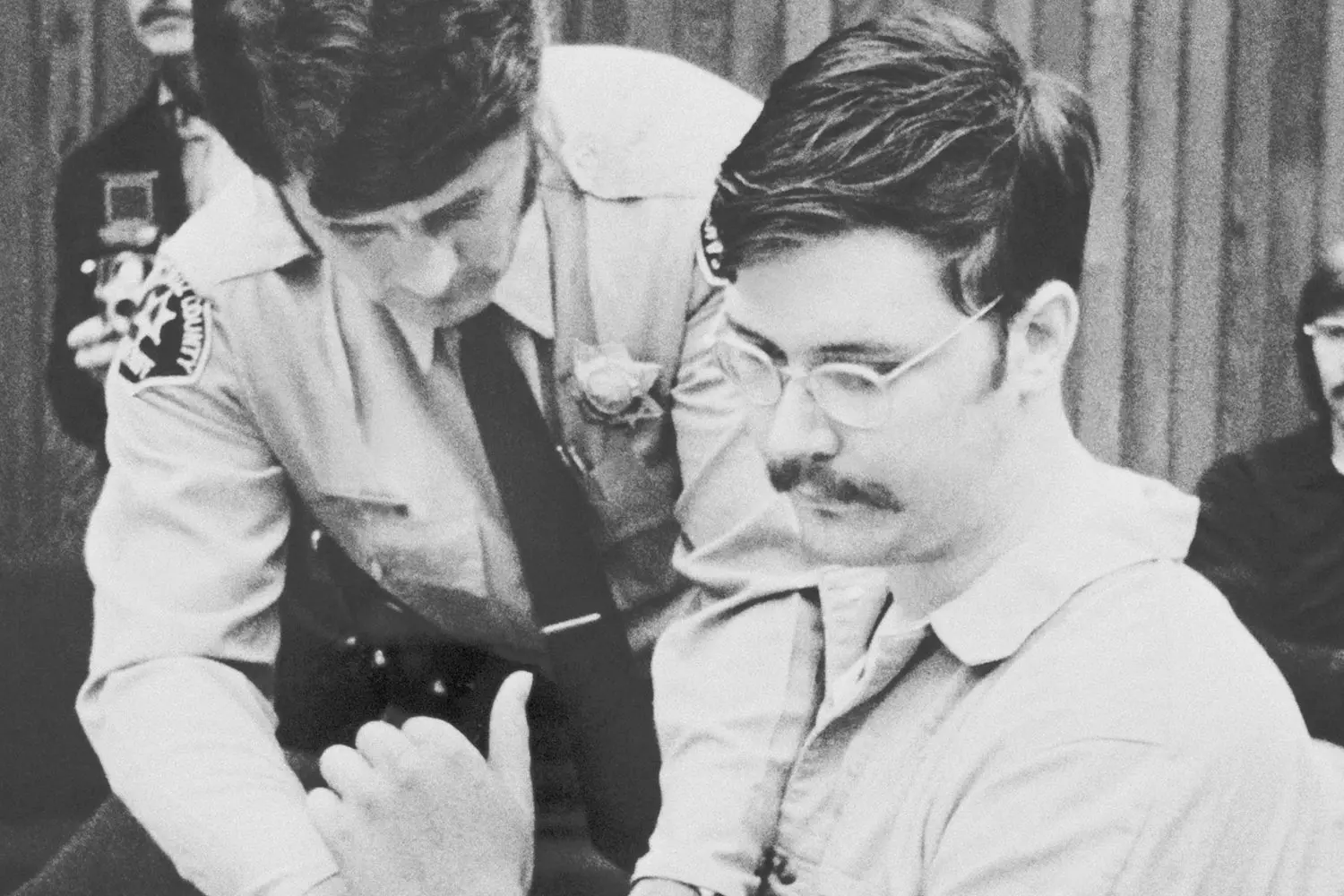
The criminal history of the USA through your own eyes with American Butler
The stories of serial killers are not just chilling chapters from the past. They are lessons for the future. They remind us of the importance of mental health, social support, and being attentive to the people around us. And, of course, that even the most charming face can hide a monster.
American Butler offers exclusive tours exploring the criminal history of the United States. You will see:
- Historic prisons and courtrooms;
- Sites where killers were caught or went into hiding;
- Crime museums with real artifacts;
- A professional guide with deep knowledge and an engaging storytelling style.














